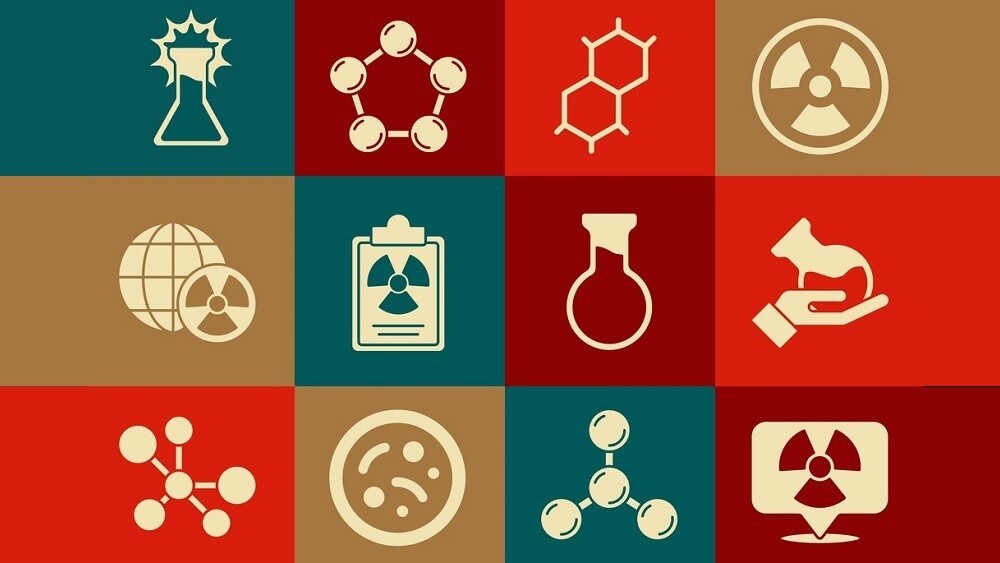With a flurry of recent Big Pharma investment in radiopharmaceutical therapeutics, the FDA issued draft guidance last month in a move former FDA Commissioner Stephen Hahn sees as the regulator “trying to get ahead on a new set of therapy that they see becoming very important for cancer.”
After its March 2022 approval for certain types of castration-resistant prostate cancer, Novartis’ Pluvicto hit blockbuster status last year, clearing $1 billion in sales.
Just over three years later, the radiopharmaceutical sector is pushing at the edges, with some projections putting the market at more than $16 billion by 2033, and powerhouses like AstraZeneca, Bayer and, of course, Novartis are seeking a piece of the pie. Last month, the FDA provided these drugmakers with new draft guidance, a move former FDA Commissioner Stephen Hahn welcomed.
“I think what we’re seeing here is the agency trying to get ahead on a new set of therapies that they see becoming very important for cancer,” Hahn, who recently accepted the CEO position at North Carolina–based CDMO Nucleus RadioPharma, told BioSpace in an interview. “It’s nice to see the agency provide some clarity on what expectations should be.”
Hahn observed the accelerated trend in new drug applications (NDAs) and investigational new drug (IND) applications for radiopharmaceuticals. When this happens, he said, “it becomes pretty clear to review teams and leadership that there needs to be some consistency in the development process and what’s needed for approval.”
In April 2024, Novartis picked up another radiopharmaceutical approval, this time for Lutathera for pediatric patients with gastroenteropancreatic neuroendocrine tumors. Together with Pluvicto, sales totaled more than $2 billion that year. But Novartis could soon face competition, as a spate of large and small companies including specialty outfits like Perspective Therapeutics and giants like Eli Lilly, AstraZeneca and Bristol Myers Squibb also working in the space.
Hahn sees the FDA’s actions as providing a greenlight for the industry, with the regulator signaling that it expects to see the flow of radiopharma applications increasing further.With all the considerations that new modalities engender, he said the regulator is trying to keep tabs on issues that might occur down-the-line—an arduous process with which Hahn has first-hand experience.
Andrew Tsai, biopharma analyst and senior vice president at Jefferies, agreed that the FDA was driven to issue the guidance based on the increasing number of players in the space. “It’s good to know that the FDA is paying attention, and it suggests that the FDA wants to collaborate by issuing the guidance,” he told BioSpace. “They didn’t have to do this.”
A Whole New Field
The draft guidance, which is open for comments until Oct. 20, focuses on a range of subjects, particularly dose optimization, clinical trial design and patient selection, as well as safety concerns.
Radioligand therapies (RLT) comprise a radioactive isotope conjugated to a targeting molecule that guides the isotope to a specific tissue. In Pluvicto’s case, a lutetium isotope is joined with a prostate-targeting molecule. But the dosing for these types of therapies has often been based on traditional radiation treatments that has been used to treat cancer for more than a century.
Mike Ritchie, chief commercial officer at cancer-focused CRO Champions Oncology, described radiation as “quite literally an external machine that shoots a beam into sites of tumors.”
“All of the clinical safeguards were around that type of radiation therapy,” he told BioSpace. “Fast forward to now, there’s a new field where we’re injecting radiation into patients, with a targeting moiety that treats the tumor in a targeted way.” Since targeted radiotherapy is still a new field, the FDA is seeking more details in applications—such as number of doses tested and toxicities that occur—because there is simply less familiarity with the modality at both the agency and across the sector.
“They’re saying that ‘we don’t know what we don’t know,’” Ritchie said.
Depending on the type of radiotherapy, the FDA may even ask sponsors to show a reading of the level of radiation within each organ, he continued. According to the new guidance, sponsors applying for INDs and NDAs should consider new safety precautions and exposure standards, given that RLTs get isotopes to tissues in a far more precise way than an external beam. For instance, becauseif the antigen is specific enough, RLTs should in theory only accumulate in the target organ. However, because many cancers express genes in off-target tissues, sponsors will need to keep tabs on radiation levels in multiple tissues during clinical trials.
Ritchie compared RLTs to a therapy with a similar structure: antibody-drug conjugates. The first ever FDA-approved ADC, Pfizer’s Mylotarg, got the greenlight in 2000 but was later withdrawn from the market later due to safety issues. That’s something the FDA would want to avoid with another new modality, he said.
In the past, “ADCs have been clean in monkeys and in humans there was toxicity,” Ritchie continued. “The FDA is just doing what it should be: keeping patients first.”
A Healthy Sign
The FDA’s move to issue guidance on radiopharmaceuticals is a healthy sign for a sector that has seen a flurry of activity over the last few years. In 2024, four different Big Pharmas—Novartis, Eli Lilly, AstraZeneca and Bristol Myers Squibb—all made low single-digit billion dollar acquisitions of small radiopharmaceutical companies.
“There’s a good amount of money flowing in a space that people didn’t really think about 5, 10 years ago,” Tsai said. “At least in the investor’s lens, it’s caught people’s attention.”
To Hahn, the field is already on track to improve patients’ lives. He noted that Pluvicto’s initial approval was limited to subsets of prostate cancer patients, but the therapy has picked up multiple label expansions just this year.
“We really didn’t have an alternative to hormones and then chemotherapy in [castration-resistant prostate cancer] and chemotherapy has relatively modest effectiveness in that disease.”
There was significant unmet medical need in castration or hormone-resistant prostate cancer, Hahn said, “and being able to apply [radiopharmaceuticals], extend survival, improve quality of life and not make people sick with it is a really important advance.”
Hahn said he envisions a world where radiopharmaceuticals can be combined with currently available immuno-oncology agents to double up on both modalities’ effectiveness. “One could imagine that being the pathway of development in diseases that are very difficult to treat,” he said, like breast cancer, lung cancer and malignant melanomas.
“There’s a lot of situations where we really don’t have good tools or the tools are pretty toxic,” Hahn told BioSpace. “As you know in oncology . . . there are a lot of unmet medical needs.”






